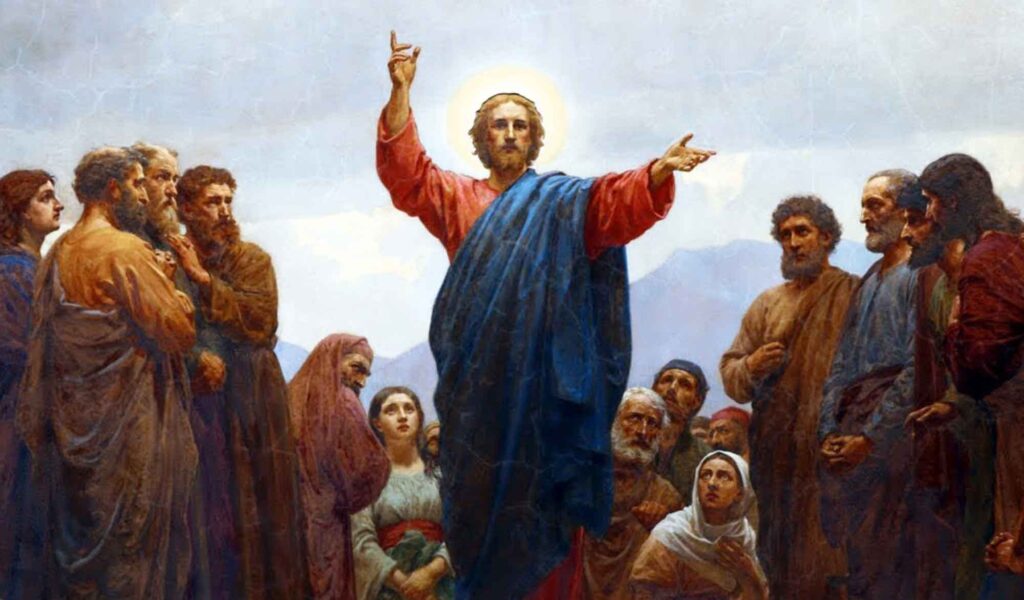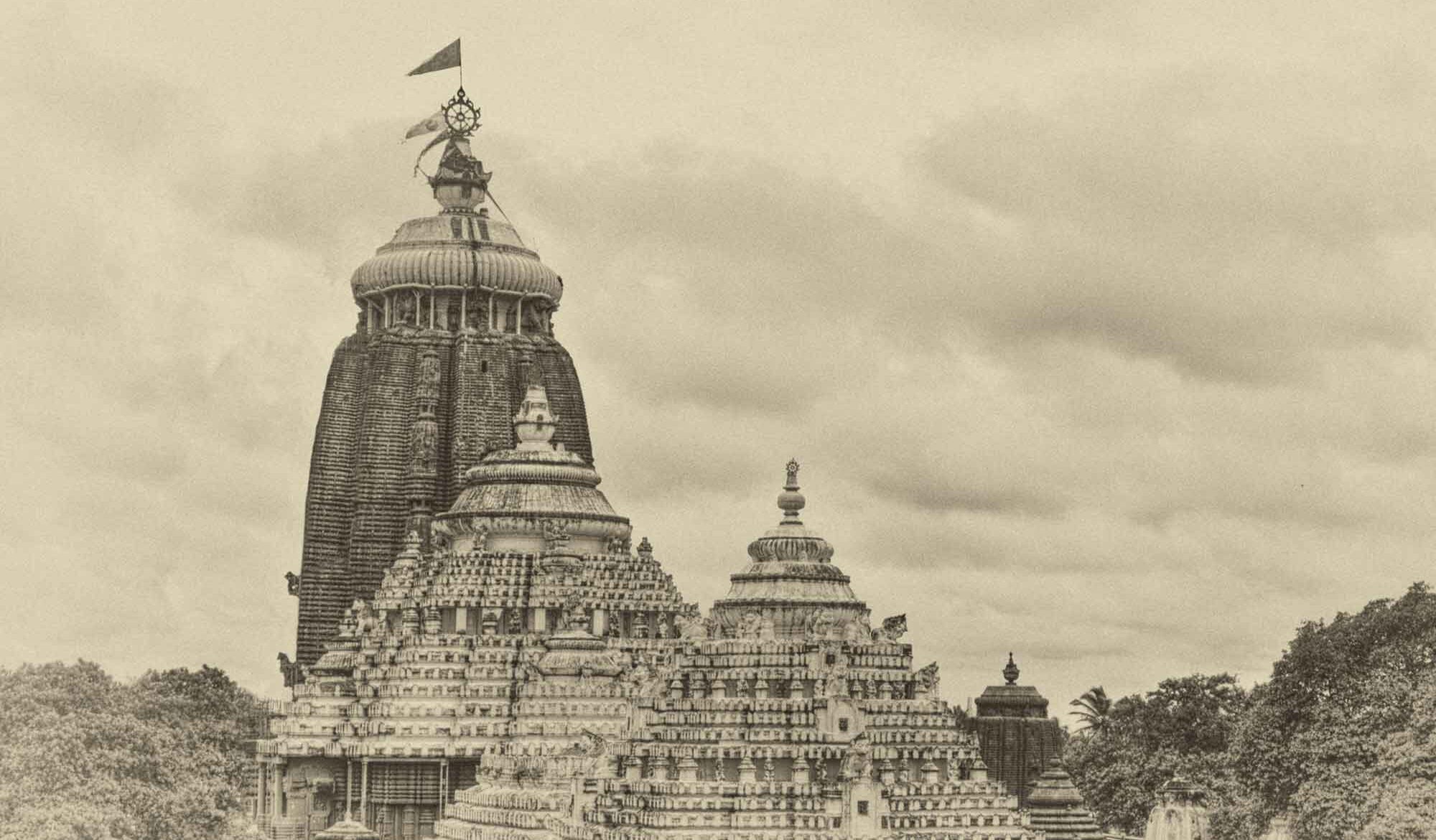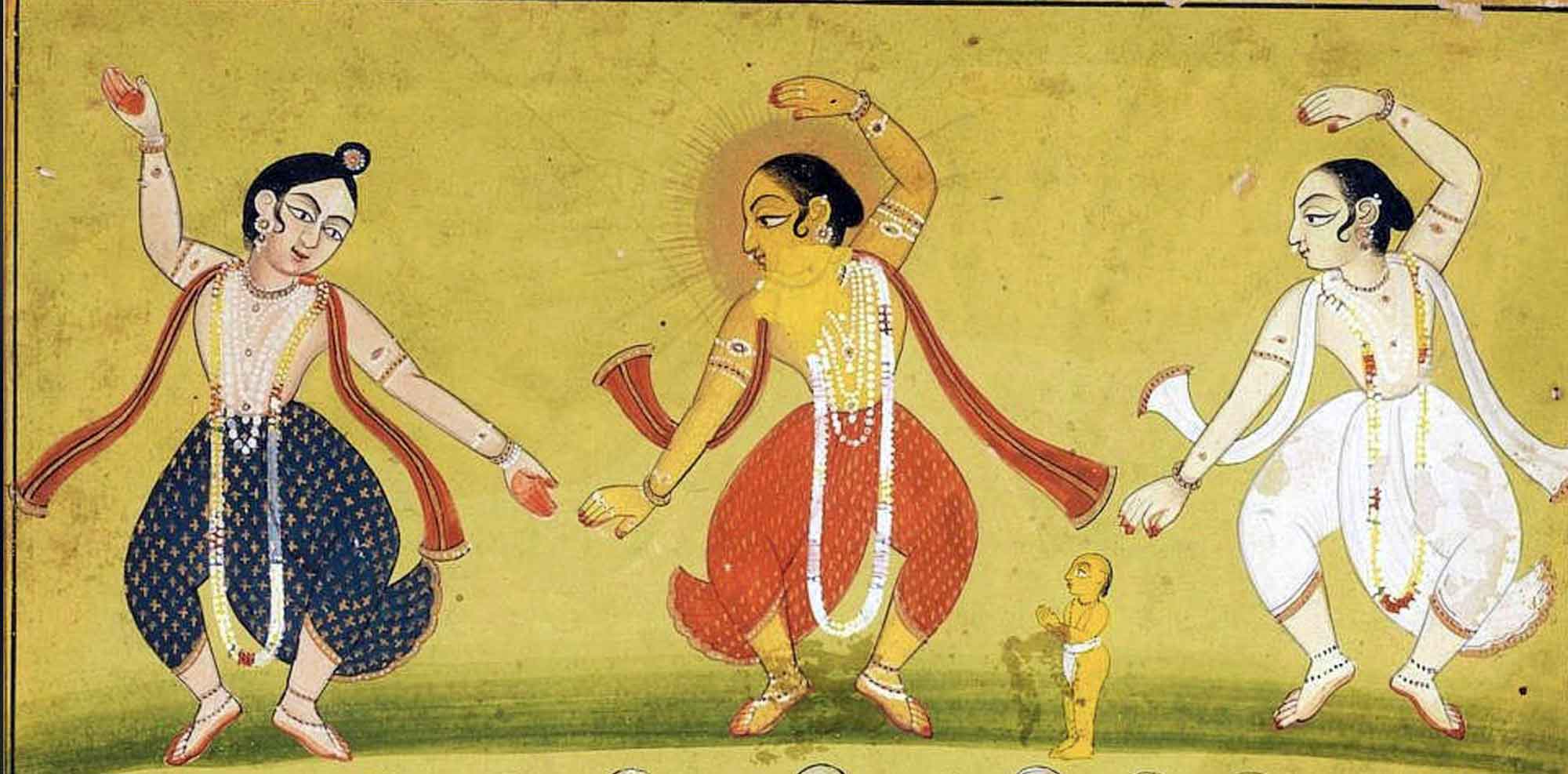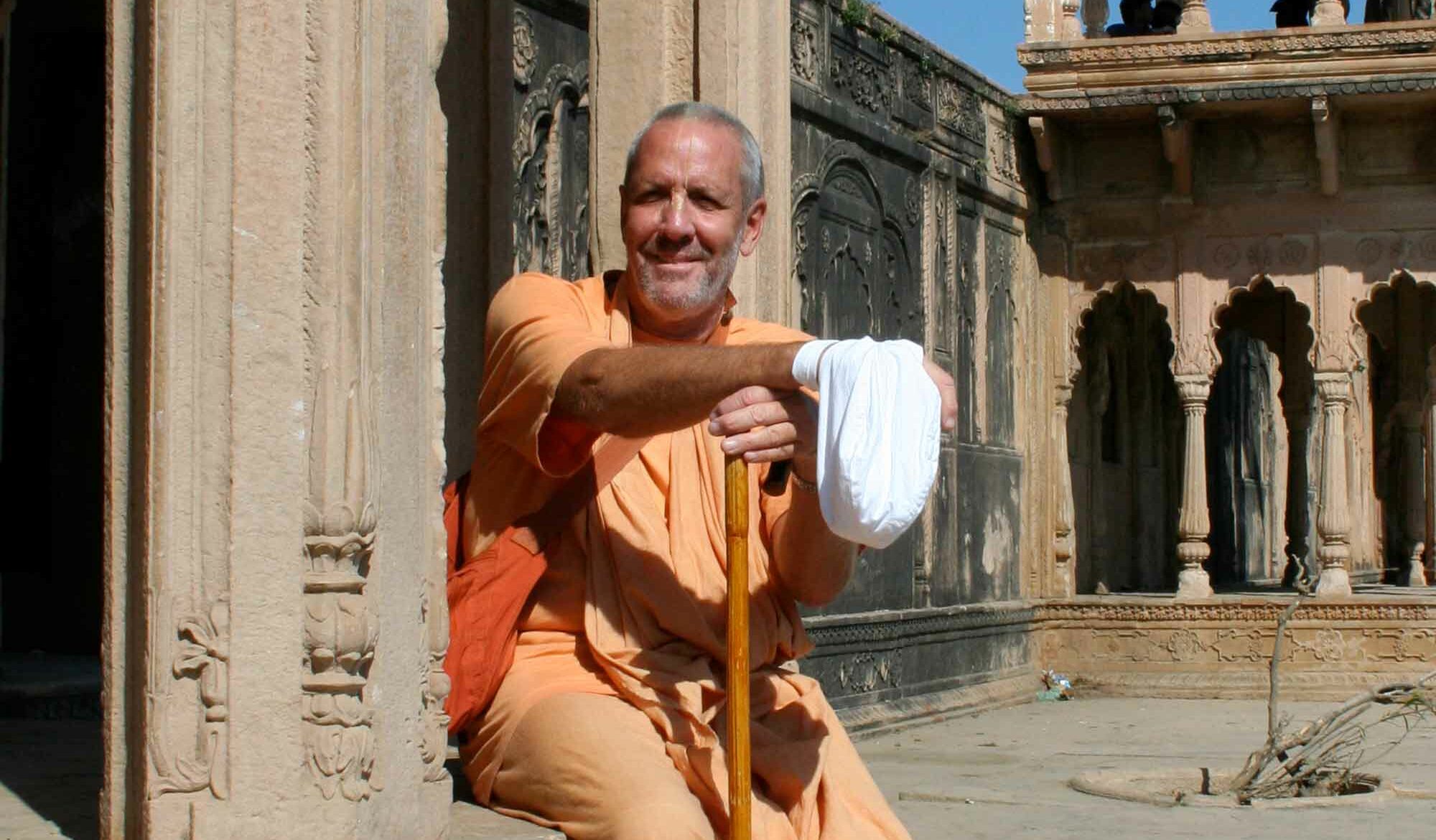by Swami B.G. Narasingha
“Jīvas and the Marginal Plane” was written in January 2005 by Śrīla B.G. Narasiṅgha Mahārāja, in response to a question concerning the ‘fall’ of the jīva, as explained in the GBC book ‘Our Original Position’ (OOPs). Narasiṅgha Mahārāja gives many quotes from the previous ācāryas to show how the misconception of the jīva’s ‘fall’ is erroneous.
Devotee: I have read the book “Our Original Position” (OOP) published by the Iskcon GBC Press in which it is stated that the jīvas (living entities) come to this material world after falling from grace in the spiritual world. Is this ‘fall philosophy’ correct according to śāstra and previous ācāryas?
Swami Narasiṅgha: No, it is not at all the correct understanding of how the jīvas came into material existence. The book (OOP) does not properly represent Gauḍīya Vaiṣṇava philosophy nor does it properly represent the teachings and conclusions of our spiritual master Śrīla A.C. Bhaktivedānta Swami Prabhupāda.
One of the authors of OOP has stated that in his opinion the views in OOP provide broad evidence of a fall/no fall paradox of the soul’s origin being rooted in Gauḍīya Vaiṣṇava tradition as follows:
“OOP provides broad evidence from within the Gauḍīya Vaiṣṇava tradition to show that Śrīla Prabhupāda’s paradoxical claims on the soul’s origin are firmly rooted in that tradition.” (Heresy and the Jiva Debate by Howard Resnick (Hṛdayānanda Dāsa Gosvāmī) – The Hare Kṛṣṇa Movement -The Post-charismatic Fate of a Religious Transplant)
Having gone through OOP in great detail, we fail to see how the authors have done anything other than ignore the crucial points surrounding the jīva issue, misinterpret the śāstra (Gauḍīya Vaiṣṇava tradition) and create imaginary interpretations. Truthfully speaking, outside of the limited circle of Iskcon, no Gauḍīya Vaiṣṇava philosopher accepts the OOP book as authoritative. The book reads like the papal dogma of Christianity rather than the philosophy of Gauḍīya ācāryas. In fact, the authors of OOP make statements that are so absurd, no intelligent person will take them seriously.
According to the OOP book A.C. Bhaktivedānta Swami Prabhupāda sometimes says the jīva falls from association with Kṛṣṇa and sometimes he says the jīva does not fall. This then becomes a paradox. A paradox is a statement, proposition or situation that seems to be absurd or contradictory, but in fact is or may be true. OOP therefore suggests that the jīva falls and doesn’t fall simultaneously. But when A. C Bhaktivedānta Swami Prabhupāda himself states the conclusion, then the so-called ‘paradox’ created by some of his followers, vanishes.
According to the Bhaktivedānta Purport on Śrīmad Bhāgavatam 3.16.26:
“The conclusion is that no one falls from the spiritual world, or Vaikuntha planet, for it is the eternal abode.”
This conclusion, which completely negates the so-called paradoxical view created in the OOP book, is also upheld by śāstra and previous ācāryas such as Jīva Gosvāmī, Bhaktivinoda Ṭhākura, Bhaktisiddhānta Sarasvatī Ṭhākura, and all bona-fide devotees in the Gauḍīya Vaiṣṇava sampradāya. The conclusion is that the jīvas, that are now conditioned by the modes of material nature and originate in the ‘taṭasthā’ or the marginal plane of existence, did not fall from the spiritual world.
Ignoring the conclusion of their spiritual master, the authors of the OOP book insist that the jīva falls from the spiritual world. Thus their opinions are taken simply as faulty interpolations.
The actual position of the jīva is marginal. The marginal plane, as the origin of the jīvas between the material and spiritual worlds, has been stated in śāstra and by previous ācāryas. There, in that marginal plane, the jīvas are in a state of equilibrium but due to their innate nature they gradually become attracted to either the spiritual or material energy of the Supreme Person.
When one accepts the direct meaning of the śāstra (āmnāya vākya) it is understood that the jīvas are taṭasthā-śakti – i.e. they are the marginal potency of Godhead.
BṚHAD-ĀRAṆYAKA UPANIṢAD states the following about the marginal position of the jīva:
asya vā etasya puruṣasya dve eva sthāne bhāvata
idaṁ ca paraloka-sthānaṁ ca sandhyaṁ tṛtīyaṁ
svapna-sthānam tasmin sandhye sthāne tiṣṭhan ete
ubhe sthāne paśyati idaṁ ca paraloka-sthānaṁ ca
“The jīva-puruṣa should inquire about two locations, the material world and the spiritual world. The jīva is situated in a third position, called svapna-sthāna, on the border between these two places. Situated in this marginal place, he can see both the material and spiritual worlds”. (Bṛhad-āraṇyaka Upaniṣad 4.3.9)
tad yathā mahā matsya ubhe kule
nusañcarati pūrvaṁ ca paraṁ caivam
evāyaṁ puruṣa etāv ubhāv antāv
anusañcarati svapnāntaṁ ca buddhāntaṁ ca
“Just as a large fish living in the river wanders from one bank to the other, so the jīva is of similar quality, and is equipped to wander in the Karana waters between the material and spiritual worlds (svapnānta and buddhānta).” (Bṛhad-āraṇyaka Upaniṣad 4.3.18)
JĪVA GOSVĀMĪ writes in his commentary to Śrī Brahma-saṁhitā 5.21 and quotes Śrī Nārada–pañcarātra:
yat taṭa-sthaṁ tu cid-rūpaṁ sva-saṁvedyād vinirgatam
rañjitaṁ guṇa-rāgeṇa sa jīva iti kathyate
“Although spiritual and conscious by nature, the jīva lives on the border between the spiritual and material worlds. When it chooses to enter the material world, it becomes contaminated by the modes of nature. That is said to be the spirit soul.”
BHAKTIVINODA ṬHĀKURA writes the following in numerous books:
ubhaya-kula dekhite dekhite bhogecchara udaya
haile tāhāra cit-sūrya-svarūpa kṛṣṇa haite bahirmukha haya
“The moment that the jīvas desire to enjoy independently while gazing at the two banks of the river, they become averse to Kṛṣṇa, who is like the sun.”
tini cit u jaḍera sandhi-sthāle taṭasthā-śakti-karttṛka prakatīta haiya sei sthāna haite cij-jagata u māyika-jagata ubhaya sthāna dekhite lagilen. Ektu bhagavāj-jñānakṛṣṭa haiya yāhāra sei jñāna-saṁsarga-prasaṅga cidābhilāṣi hailen, tāhāra nitya-bhagavad usmukhatā-prayukta cic-chakti-vilāsagata-hlādinī-bāla-prapta haiyā kṛṣṇa-parṣada-rūpe cij-jagate nita hailen. Yāhāra svecchākrame anyaparśva-sthita māyāte mohita haiyā lobha karilam, tāhāra māyā-karttṛka ahūta haiyā māyika jagate akṛṣṭa haoyāya māyādīśa karaṇarnavaśayī puruṣāvatāra-karttṛka jaḍa-jagate nikṣipta hailen. Ihā kevala tāhādera nitya bhagavad-vaimukhyera phala. Māyā-madhyagata ihāvamātra māyāvṛtti avidyā tāhādigke lipta kavila. Avidyālipta haiyā tāhāte abhiniveśa karate avidyā-bandha karme cakre paḍilena. E sthāle karma-phala-bhoji pakṣīra sahita tāhādera tulana hailā.
“The jīva appeared by the marginal energy at the dividing line between spirit and matter. From that position, he began to gaze at the spiritual and material worlds. Those jīvas who were attracted somewhat to realization of the Supreme Person became desirous of the spiritual realm because of that contact of knowledge. They then obtained strength from the hlādinī potency of the abundant cit-śakti, which made them favourable to the Lord eternally, and they were brought into the spiritual world as associates of the Lord. Those who, by their own free will, became bewildered and became greedy for māyā situated on the opposite side, being beckoned by māyā, then became attracted to the material universe, and were thrown in the universe by Karaṇarnavaśayī Viṣṇu, the controller of māyā. That was but the result of their eternal aversion to the Supreme Lord. The moment they entered the material realm, they became overcome by ignorance, the function of māyā. Overcome by ignorance, they fell into the wheel of binding karma in order to become fully absorbed in their task.” (Mahāprabhura-śikṣā Ch.7)
“It should be understood that the jīva soul is neither produced of this material world, nor created in the transcendental world. They are originated from the marginal line between the transcendental and mundane spheres.” (Tattva Viveka 2.4 page 55)
“Among the unlimited potencies of Śrī Kṛṣṇa, there is one known as taṭasthā-śakti (border-potency). From that śakti comes out the jīva-souls remaining at the junction of the two worlds, viz., the transcendental and the mundane ones, may contact them both. In its composition it is only the atomic cit (pure sentience)…on account of the purity in its composition, it has got the capacity for being the eternal denizen with divine bliss in the transcendental power.” (Jaiva Dharma, Ch. 4)
“A jīva is a spark of the eternal consciousness. A jīva is first situated on the line of demarcation between the material world and the spiritual world. There those jīvas who do not forget their relation with Kṛṣṇa derive the power of consciousness and are drawn into the spiritual world, they come in eternal touch with Kṛṣṇa and enjoy beatitude arising from the worship of Kṛṣṇa. And those who forget Kṛṣṇa and give themselves up to māyā’s enjoyments, māyā with her own force draws them into herself. It is from that very moment that we fall into the misery of this world.” (Jaiva Dharma, Ch. 7)
“The semblance or dim reflection of the internal cit-potency is the jīva-śakti (potency) or taṭasthā-śakti stationed in between cit-jagat and acit-jagat or māyika-jagat whereas the shadow or perverted reflection of that internal cit potency is the māyā-śakti or external acit potency. All the jīvas emanate from the taṭasthā-śakti of God and accordingly the mundane worlds emanate from the māyā-śakti of God.” (Bhāgavata-arka Marīci-mālā, Ch. 1, Intro)
“The jīva-souls are emanated from the jīva-śakti of Śrī Kṛṣṇa and they are spiritual but atomic. In the very self of the jīva-soul or in his constitution practically there remains no māyā. As jīva-souls are atomic in size and being emanated from the taṭasthā-śakti of Śrī Kṛṣṇa (viz. from the intermediary-potency which exists in between cit-jagat and māyika–jagat) jīva-soul is liable to be subjected to māyā when he becomes averse to his constitutional right of serving the Lord. Jīva-soul in bondage misconstrues himself as the doer and enjoyer, therefore is affiliated to the adopted bodies that are provided by prākṛti. A jīva by dint of spiritual virtue may possess steadfast devotion to Śrī Kṛṣṇa and getting rid of worldly affinity goes back to the abode of bliss.” (Bhāgavata-arka Marīci-mālā, Ch. 7, text 34, purport)
“The constituent particles, in the form of pencils of effulgence of Mahā-Viṣṇu are manifest as the individual souls (jīvas).” (Brahma-saṁhitā 10, purp.)
“The cit-potency of God is boundless, so is His māyā-potency also enormous; between them are the innumerable minute jīvas. The jīvas emanate from the taṭasthā-śakti (border potency) of Śrī Kṛṣṇa; so is the nature to taṭasthā (border potency) of Śrī Kṛṣṇa.” (Jaiva Dharma, Ch. 15)
“The root of all actions is the desire for acts, the root of which again is avidyā. Avidyā is the name for the forgetfulness of soul’s essential nature that ‘I am Kṛṣṇa’s servant.’ This avidyā did not commence within the course of the mundane time. That root of karma of the jīva arose when he was at the taṭasthā position. As such, the beginning of karma is not to be traced within mundane time, and, on that account karma is beginning-less.” (Jaiva Dharma)
“There are two types of jīvas liberated from māyā, nitya-mukta, eternally liberated, and baddha-mukta, those who were bound but became liberated. The jīvas who were never bound by māyā are called nitya–mukta. The nitya-muktas are also of two types, aiśvarya–gata-nitya-mukta and mādhurya-gata-nitya-mukta. The former are the associates of Lord Nārāyaṇa in Vaikuṇṭha and are the atomic particles from Mūla-Śaṅkarṣaṇa. The latter are the associates of Lord Kṛṣṇa in Goloka. They are the atomic particles of Śrī Baladeva situated in Goloka Vṛndāvana.” (Jaiva Dharma, Ch. 17)
BHAKTISIDDHĀNTA SARASVATĪ ṬHĀKURA has written on the nature of jīva as follows:
“Before acquiring material designations, the living entity is supremely pure. Even though he is not engaged in serving the Supreme Lord, he remains situated in the neutral position of śānta-rasa due to his marginal nature. Though the living entity born from the marginal potency does not at that time exhibit a taste for serving the Lord due to a lack of knowledge of self-realization, his direct propensity of serving the Supreme Lord nevertheless remains within him in a dormant state. Though the indirect propensity of material enjoyment, which is contrary to the service of the Lord, is not found in him at that time, indifference to the service of Hari and the seed of material enjoyment, which follows that state of indifference, are nevertheless present within him. The living entity, who belongs to the marginal potency, cannot remain indifferent forever by subduing both devotional and non-devotional propensities. He therefore contemplates unconstitutional activities from his marginal position. As a sleeping person dreams that he is active in the physical world without actually being involved in activities, when the dormant indifferent living entity of the marginal potency exhibits even a little apathy to the service of the Supreme Lord and situates himself in a neutral, unchanging condition for even a little time, he is infected by impersonalism. That is why the conditioned soul desires to merge in the impersonal Brahman, thus exhibiting his mind’s fickle nature. But due to neglecting the eternal service of the Lord and thereby developing the quality of aversion to the Lord, he cannot remain fixed in that position. In this way aversion to the Lord breaks his concentration of mind and establishes him as the master of this world of enjoyment.
“Due to being situated in the marginal position, living entities who are averse to Hari assume the nature of mixed consciousness; in other words, when the marginal energy living entities mix with the external energy, they consider themselves the enjoyers and then enter the material world. The cause of the spirit soul’s coming to live in this world in aversion to Kṛṣṇa is his misuse of his free will. When this aversion becomes strong, the living entities accept a material mind and body in order to enjoy the temporary material world and thus come under the control of fruitive reactions. And when, on the strength of pious activities, they become transcendental to the varṇāśrama principles, which distinguish superior and inferior behaviour in this world, they become paramahaṁsas by perfecting themselves through sādhana. Those who become paramahaṁsas are the Hari-janas. And those who fall from the platform of paramahaṁsa and engage in fruitive activities while associating with matter are situated on the platform of varṇāśrama. (From Brāhmaṇa & Vaiṣṇava)
“Lying in between the cit (internal spiritual) and acit (external deluding cosmic) potencies of the Lord, the jīva souls are freed from the shackles of the triple qualities of māyā by the loving service to the Supreme Lord Śrī Kṛṣṇa.” (From the essay – Śrī Kṛṣṇa)
“Jīvas are of two kinds – (1) Nitya-Mukta (eternally free), (2) Nitya-Baddha (eternally enslaved). Free jīvas are never enslaved. They are serving the Supreme God in five different functions in His eternal blissful abode, where there is no change, no destruction, no misery. Jīva, once entered there never comes back here. The inconceivably narrowest line of demarcation between land and water or the line where land and water meet is called ‘taṭa’; so also the meeting line of the cit world or the eternal abode of the Supreme Lord and the acit world or the taṭa region of māyā is called taṭa. The power of the Supreme Lord displayed at the taṭa is known as the taṭasthā (lying at the taṭa) or marginal power. All the jīvas being the display of this power, have the inherent oscillating tendency and capability of going to the cit or the acit world. Taṭa not being a resting place, jīvas must go this side or that; those preferring the acit, fell into the clutches of the octopus māyā, when these mortal costumes of mind and body were put on him as a punishment. The satanic frenzy in which the jīva dislikes the blissful and eternal service of his Master and prefers to quench his thirstful desires of enjoying matter, opens before him a perpetual spring of liquid fire and poison at which he begins to drink deep. Thus in going to lord it over māyā, jīva became enslaved by her.” (Vaiṣṇavism -Real and Apparent)
ŚRĪDHARA DEVA GOSVĀMĪ MAHĀRĀJA spoke of the origin of the jīvas as follows:
“The brahma-jyoti, the non-differentiated marginal plane, is the source of infinite jīva souls, atomic spiritual particles of non-differentiated character. The rays of the Lord’s transcendental body are known as the brahma-jyoti, and a pencil of a ray of the brahma-jyoti is the jīva. The jīva soul is an atom in that effulgence, and the brahma-jyoti is a product of an infinite number of jīva atoms.
“Generally, souls emanate from the brahma-jyoti which is living and growing. Within the brahma-jyoti, their equilibrium is somehow disturbed and movement begins. From non-differentiation, differentiation begins. From a plain sheet of uniform consciousness, individual conscious units grow. And because the jīva is conscious it is endowed with free will. So, from the marginal position they choose either the side of exploitation or the side of dedication.
“Because the soul is very small, his freedom is also imperfect; a soul in the marginal position is very vulnerable. Freedom does not mean absolute freedom. Because the soul’s existence is small, his freedom is defective, there is the possibility of committing a mistake. Freedom of the minute soul does not mean perfect freedom. Complete freedom would be perfect reality, but the minute soul is endowed with the smallest atomic freedom. This is the position of the atoms of consciousness, and this is why they are vulnerable. They may judge properly or improperly; that is the position of those who are situated in the marginal position. If the soul were not endowed with the freedom to determine his position, we would have to blame God for our suffering. But we cannot blame God. The starting point of the soul’s suffering is within himself.” (Śrī Kṛṣṇa – Reality the Beautiful, Ch.4, Origin of the Soul)
BHAKTI PRAJÑĀNA KEŚAVA MAHĀRĀJA states as follows:
“When the thoughts of a jīva in the taṭasthā realm, which is in between the spiritual and material worlds, gravitates towards independence and its accompanying temporal, material pleasures; the immediate result is forced descent to the material universes.” (Vaiṣṇava-vijaya)
ŚRĪLA PURĪ GOSVĀMĪ MAHĀRĀJA has this to say about the jīva:
“The characteristic of the marginal potency is of its being able to be influenced by both the spiritual and material energies.
From Bṛhad-āraṇyka-śruti 2.1:
yathāgneḥ kṣudrā visphuliṅgā vyuccaranti evam
evāsmād ātmanaḥ sarvāni bhūtāni vyuccaranti
“Just as many tiny sparks are emitted from a blazing fire, similarly many varieties of minute living entities are produced from the Supreme Lord. This living entity has option to either stay in the material world or attain the spiritual world, he is in the middle position at the demarcation between these two worlds and has equal opportunity to go to either of these worlds. This marginal position can be described for more clarity: Just as a huge fish can move either to one bank or the opposite bank, similarly the living entity, from his MARGINAL POSITION can go either to the material or spiritual worlds, and is dependent on whether he is dreaming (in illusion) or awake in knowledge. The word ‘taṭasthā‘ is further examined. The boundary between the land and the water is called the bank (taṭasthā). This is usually a narrow strip so minute that it cannot be seen with a naked eye. If we compare the spiritual world to the ocean and the material world to be the land, that minute strip or boundary is the corresponding position of the living entity. Both these worlds are huge in comparison to the minute living entity. Thus in the middling position being the marginal energy, partial characteristics of both sides are present in the living entity. By proper spiritual cultivation, he can be spiritualized or conversely in being ignorant, can fall into the material whirlpool. Originally, the living entity is constituted of spiritual elements, not material. Nevertheless, it can be overcome by the force of material attraction. Without the association of pure devotees, the living entity cannot be released from his precarious position. In Caitanya-caritāmṛta is described how the living entities, though minute sparks of the Supreme, are either bonded or eternally liberated.” (Bhakti Siddhānta Sāra – Essence of Pure Devotion, Ch.Yogamāyā & Mahamāyā)
OUR CONCLUSION
From śāstra and the opinions of ācāryas as quoted above it is quite clear that there is no possibility of fall down from the spiritual world, Vaikuṇṭha or Goloka Vṛndāvana. That Iskcon leaders continue to preach the apa-siddhānta (false conclusion) of the fall of the jīva from the spiritual world (as they have done in the OOP book) is indeed unfortunate and misleading.
In 1981 Iskcon leaders challenged the wisdom of Śrīla Śrīdhara Deva Gosvāmī when he tried to help them with a correct understanding of the marginal position of the jīva, but they returned his kindness with insult and offense. Having offended such a pure Vaiṣṇava and calling him a ‘māyāvādī‘ for upholding the position of the jīva as marginal, Iskcon has now adopted the ‘fall philosophy’ that is tantamount to impersonalism (because such a ‘fall philosophy’ suggests the fallibility of the spiritual world) as their institutional doctrine. This is clearly an anartha (bhrama–tattva) that results from Vaiṣṇava aparādha.
In 1987 Iskcon leaders made an official apology to Śrīla Śrīdhara Maharaja for their offensive behaviour towards him but then they continued to neglect his instructions and guidance in the matter of properly understanding Gauḍīya Vaiṣṇava philosophy. That Śrīdhara Deva Gosvāmī Maharaja should be approached and accepted as an authority on philosophical issues and questions was the direct instruction of A.C. Bhaktivedānta Swami Prabhupāda to his disciples shortly before he departed from this world in 1977. The statements of Iskcon leaders in this regard have been documented in the book, Our Affectionate Guardians.
In order to gain an accurate understanding on the origin of the jīva and numerous other philosophical and devotional topics, literally a thousand devotees or more have turned away from Iskcon to seek spiritual guidance elsewhere. One would think that losing so many devotees and even losing prominent leaders and gurus would urge that society to re-assess their understanding of Gauḍīya Vaiṣṇava philosophy, but unfortunately it does not. Iskcon leaders continue to lead their members into a philosophical abyss, while they feast on the bitter fruits (nīmboli) of misconception.
The onus is now on Iskcon leaders to either accept the conclusions of śāstra and ācāryas as mentioned in this article or to prove the statements of śāstra and the ācāryas to be faulty. In particular, we would be interested to see how they will prove the statement of A.C. Bhaktivedānta Swami Prabhupāda as faulty when he states, “The conclusion is that no one falls from the spiritual world, or Vaikuṇṭha planet, for it is the eternal abode.”
More Articles by Swami B.G. Narasingha
Purī – Cultural Cataracts. A British View of India
'Purī – Cultural Cataracts. A British View of India' was written by Swami B.G. Narasingha on 1990 for Clarion Call magazine, Vol.3 issue 1. In this article, Swami Narasingha gives a history of the Jagannātha Temple in Purī, Orissa, as well as a description of the Ratha Yātrā festival and how the British perceived it.
Śrī Caitanya: Fulfilment of a Transcendental Dialectic
‘Śrī Caitanya: Fulfilment of a Transcendental Dialectic’ was written by Swami B.G. Narasingha and first published in Clarion Call magazine, Vol.2 issue 4 in 1989. This article gives a short biography and explanation of the life and teachings of Śrī Caitanya Mahāprabhu. This essay was later published in Swami Narasingha’s book ‘Evolution of Theism’.
Vraja Bhāva
‘Vraja Bhāva’ was written by Swami B.G. Narasingha on April 6th 2001. Swami Narasingha answers a question concerning ‘vraja-bhāva’ and the bhajanas of Mīrābāi and explains how there’s much more to real vraja-bhāva than singing a few Hindi bhajanas…













